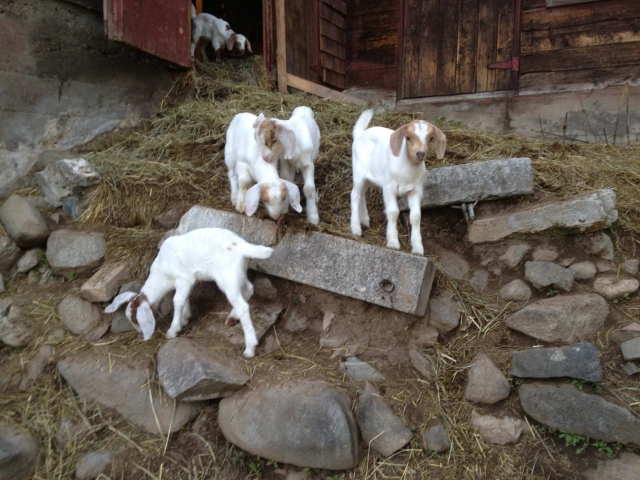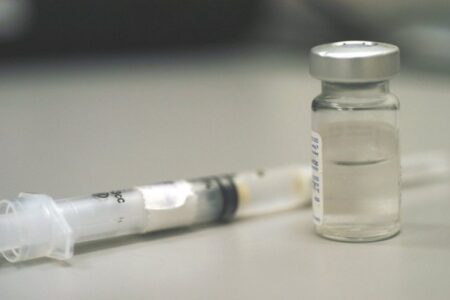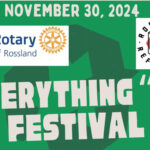COMMENT: Free Range! Organic! Local! Or none of the above...
Are you jaded yet? When you pick up a box at the store and read “natural,” does that roll-the-eyes impulse tickle your oculomotor nerves? Sure does mine, a right twitch.
“Natural” hardly means natural anymore, just like “free range” seems to allow, “We left the door open to their patch of poor pasture,” and “organic” means, “Harvested by underpaid Mexicans working in a 700 acre wasteland of salad greens and trucked out in a plastic box from Southern California.”
It just got worse thanks to the Canadian Food Inspection Agency’s (CFIA) silent mandate to enrich the big boys in agribusiness, those boys who profit at the expense of our nutrition—and so, fundamentally, our health—our planet’s health, our small farmers’ not-so-deep pockets, and yes, possibly worst of all, at the expense of meaning itself.
That’s right, “local” is no longer actually, really local. According to CFIA, I can harvest seafood from near Prince Rupert and market it in Banff—a mere 1377 kilometres away—as “local food.”
The previous definition of ‘within 50 kilometres of the place of origin’ has been replaced by ‘within 50 kilometres of the province of origin.’ CFIA wrote in their May 10 announcement that the previous definition “is outdated and does not reflect current food production practices or consumer needs and expectations.” The change, they say, is part of a broader “initiative to modernize” food labelling guidelines
Huh, is that right? Modernize. Must be why I self-identify as post-modern.
So “local” was causing somebody a problem—who would that be?—but no need to label “genetically modified?” I suppose it would be unmodern to give even the slightest indication that just about everything with soy, corn, canola, and beet sugar has had new genes smashed into it without anything messy like plant sex to get in the way? And just wait, GMO apples, potatoes, and wheat are pending “approval.”
Not mine, by gar. I approve of sex, especially when it involves pretty flowers, birds, bees, and cool breezes—no drugs and lab coats for me! (Although there are many different boats to float out there, I get it.)
Instead we have food labels that pile up statistics on calories, sodium levels, and the odd mineral that tell us astonishingly little about the actual nutrition, nor how useful it will be for our bodies’ endless and complex maintenance routines.
For most food on the typical supermarket shelf, the answer is “not very useful,” hence—in concert with higher stress, less physical activity in nature, less meaning in work, a deluge of toxins, and weaker social bonds—our culture is suffering near epidemic levels of chronic and degenerative diseases, from depression and heart disease to Alzheimer’s and cancer.
It’s exactly because more and more people understand that food from far away or assembled in factories is often nutritionally vapid that “local” became an important alternative.
Now, let’s tease apart some of the nuance here. Sure, a 50 kilometre radius hardly defines “local” either. It’s a handy way for a bureaucracy like CIFA to make things black-and-white, but our real, visceral notion of local here in BC is more likely defined by valleys, mountain ranges, and short driving distances.
I’m also certain a number of genuinely local farmers were trying to sell stuff in their area about 75 kilometres away, but got hammered by some overzealous CIFA bureaucrat. That’s the problem with black and white certified anything.
It’s also important to keep in mind that just because something is local doesn’t make it safe, sustainable, or ecological. As certifying bodies discover again and again, it’s pretty hard to nail down these terms too.
That’s where “local” comes in: the best judge of healthy, ecological food is your five senses. Local should suggest the possibility of easily visiting the farm and assessing it for yourself.
Do the animals look, smell, and sound healthy? Does the soil look rich, like you want to eat it? Do the vegetables feel solid in your hand, dense with nutrients and colour? Most importantly, does the food taste good?
“Local” means real, grassroots accountability. “Local” means “I know the guy or gal who grew this, or I could if I wanted to.” “Local” means the farmer is resting on a reputation built within the community. “Local” means “from here.”
But now it seems, “local” is a threat to agribusiness market share. Their solution? To eviscerate the meaning of the word entirely, to leave it gasping, confused, and irredeemable as has already been done to so many other words by big business PR spinners, from “sustainable” to “green.”
The Kootenays have a long tradition of trying to keep things close to home, and certain players really stood up in our communities to help this issue reach the national stage over the last two weeks.
The Kootenay Local Agriculture Society, for example, has an obvious interest in the term. Administrator Nette Lack sent out an email ten days ago to KLAS members alerting them to the new CFIA regulation. It spread from there, with Jocelyn Carver of the Kootenay Co-op in Nelson raising her voice and getting heard by CBC’s Bob Keating, and then CBC’s coverage spread across the country, with a lot of different opinions weighing in.
One voice with a national presence is Kootenay local Abra Brynne who blogs for Food Secure Canada, encouraging everyone from farmers to eaters to foster safe, local, and sustainable food.
Brynne mused, “When we think local and are embedded in a place, we are more inclined to assume and share the responsibilities that come with supporting vibrant communities and ecosystems. Sustainable and just food economies are built on respectful relationships, between people, and with the land and water that sustain us all.”
She continues, however, with the realistic observation that “distance is often necessary, even for small and ecological producers in 21st Century Canada.” She points out the obvious comparative advantages of growing fruit in the Okanagan and harvesting seafood in the maritimes, for example.
But just because the best peaches may come from Peachland doesn’t make it local. It’s only local if the juice is dripping off my chin onto Peachland soil.
Sell it in Rossland and I’ll buy a Peachland peach—it’s sure to be darn good, and likely better than any hard green peachnut I can grow here. And no doubt, even including transportation, a Peachland peach takes fewer resources than any we could grow, so it might be more “ecological” too.
But let’s call a peach a peach: a Peachland peach is only local near Peachland!
For all our expensive, tax-funded labelling laws and bureaucracies, if they can’t get food labels that tell us what we need to know, and if what the labels do tell us could well be a lie or seriously misleading, it’s all the more reason to buy food that’s so good and so close to home that it doesn’t need a label at all.

























